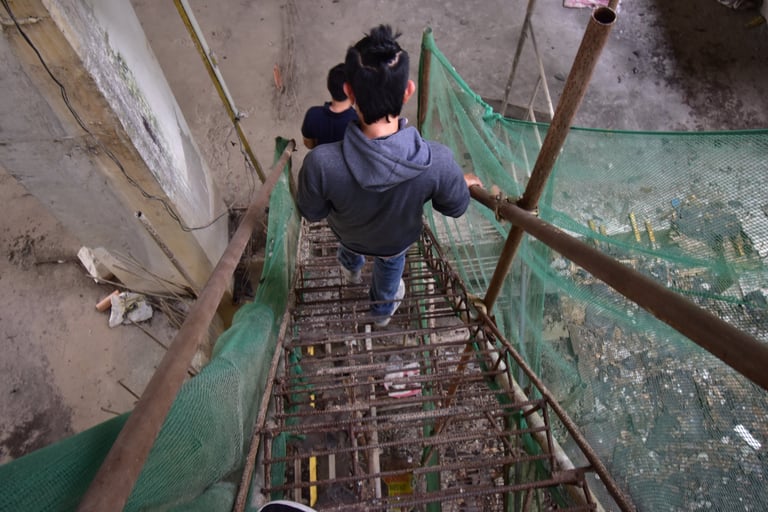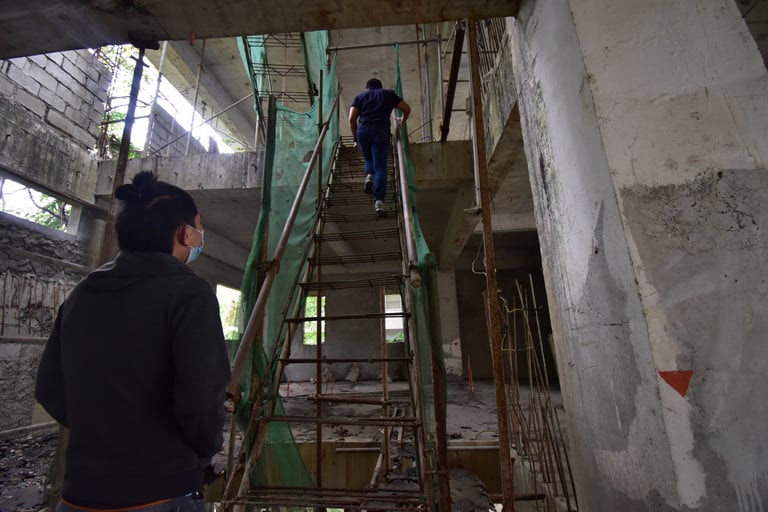The Call of the Void
Why don't we design patient rooms with balconies? The call of the void is a real psychological phenomenon. Safety is a big concern when designing hospitals and healthcare facilities.
SPACE
Richard Lasam
2/23/20252 min read


Remember when I wrote about being on a roof? I was about three floors up so I was probably around 15 meters from the ground, and the feeling of the wind and sun made me realize that I was really on the edge of a place from which one can fall. I distinctly remember that I felt the need to visualize what can happen if one falls from such a height, and had a mild thrill of thinking about it. Obviously, you don’t act on that feeling of falling
off the proverbial cliff, but this sense of an urge to jump was something I encounter whenever I walk around the sites of my projects and have to get up to elevations with minimal safety protocols.




Here's an example of the things we architects must climb: the “stairs” connecting to a higher floor at a construction site.
This is apparently a real psychological phenomenon known as “the call of the void,” in which our internal “battle senses” begin to imagine and predict what may happen when we get near a potentially hazardous situation, in this case being on a place from which one can fall and get hurt. Now, most of the time it is just a sort of warning signal in our minds to be aware of our surroundings, but in some cases, this can lead to unfortunate consequences.
During one of my lectures to a thesis design class, a student asked if it would be a good design choice to add balconies to inpatient rooms for a better patient experience. I had told the class that when I design healthcare facilities, I take special focus in providing adequate safety concepts when the client or the design requires multi-level atriums or balconies: higher than normal railings, or floor to ceiling glass panels, to inhibit and discourage this urge from happening in the first place. For patient rooms, balconies are heavily discouraged due to safety concerns. Since some patients will have mobility issues, or not be in the right state of mind, a balcony can be a safety hazard. Conversations with doctors in my past projects affirm that incidents of patients acting on the call of the void has happened in some medical institutions, so it is best that we architects mitigate the chances of this occurring.
Vessel
A recent architectural work comes to mind when I think of the call of the void: Vessel, the New York City attraction that keeps on being shuttered to increase its safety precautions due to all the incidents of people getting hurt when they visit it. Situations such as this one show us that the physical environment has a large effect on the people moving and interacting in it, and that architects have a responsibility to design these spaces to be safe for everyone.
